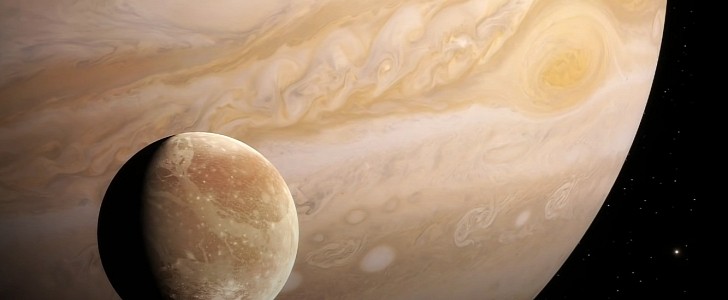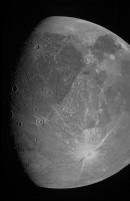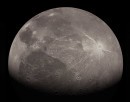A few months ago, NASA’s Juno spacecraft had a meeting with Jupiter’s largest moon, Ganymede. The spacecraft zipped close to the satellite’s icy surface, snapping on its journey some incredible photos and collecting an audio track that sounds like it belongs in an old sci-fi movie.
On June 7th, NASA’s Juno spacecraft got a close-up view of the largest moon in our solar system. It flew within 645 miles (1,038 km) of Ganymede’s surface, hitting a velocity of 41,600 mph (67,000 kph). Juno didn’t miss the chance to thoroughly document its encounter, taking notes on the satellite’s ice shell, ionosphere, and magnetosphere.
The spacecraft also “listened” to the satellite’s sounds as it sailed by it. With help from its Waves instrument, which studies radio and plasma waves emissions, Juno was able to gather data on Ganymede’s emissions (which range from 10 to 50 kHz). Scientists shifted their frequency into the lower audio range to make an eerily audio track.
NASA released a 50-second clip that offers both an auditory and a visual glimpse at what the Waves instrument captured as Juno flew past the icy moon. Around the middle of the recording, there’s a sudden change in frequencies. Scientists say that this represents the spacecraft’s movement, signaling that it was traveling from one region of the satellite’s magnetosphere to another.
“This soundtrack is just wild enough to make you feel as if you were riding along as Juno sails past Ganymede for the first time in more than two decades,” said Juno Principal Investigator Scott Bolton. “If you listen closely, you can hear the abrupt change to higher frequencies around the midpoint of the recording, which represents entry into a different region in Ganymede’s magnetosphere.”
Researchers are still analyzing the Waves data to see what mysteries Ganymede holds. However, hearing what a moon located at 390 million miles (628 million km) away sounds like is an incredible experience. Pair that with the sounds captured by NASA’s Perseverance rover on Mars, and you don’t have to go too far to feel like you’re venturing beyond our skies.
The spacecraft also “listened” to the satellite’s sounds as it sailed by it. With help from its Waves instrument, which studies radio and plasma waves emissions, Juno was able to gather data on Ganymede’s emissions (which range from 10 to 50 kHz). Scientists shifted their frequency into the lower audio range to make an eerily audio track.
NASA released a 50-second clip that offers both an auditory and a visual glimpse at what the Waves instrument captured as Juno flew past the icy moon. Around the middle of the recording, there’s a sudden change in frequencies. Scientists say that this represents the spacecraft’s movement, signaling that it was traveling from one region of the satellite’s magnetosphere to another.
“This soundtrack is just wild enough to make you feel as if you were riding along as Juno sails past Ganymede for the first time in more than two decades,” said Juno Principal Investigator Scott Bolton. “If you listen closely, you can hear the abrupt change to higher frequencies around the midpoint of the recording, which represents entry into a different region in Ganymede’s magnetosphere.”
Researchers are still analyzing the Waves data to see what mysteries Ganymede holds. However, hearing what a moon located at 390 million miles (628 million km) away sounds like is an incredible experience. Pair that with the sounds captured by NASA’s Perseverance rover on Mars, and you don’t have to go too far to feel like you’re venturing beyond our skies.







